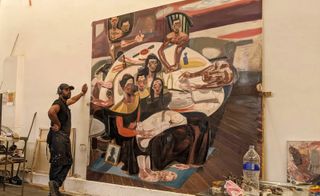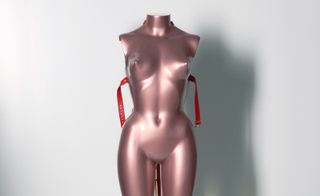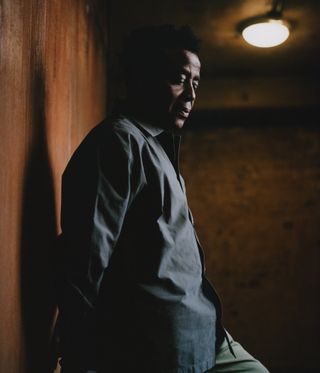At the Venice Art Biennale, countries from all over the world gather to showcase contemporary artists. In the main show, the world’s best curators give their take on the most prescient art being made today. The drama is high, the events are many: this is a chance to see some of the best, most relevant art around in an incomparable setting.
This year the biennale’s 60th edition is guided by the main exhibition’s title is ‘Stranieri Ovunque – Foreigners Everywhere’ inspired by the Palermo collective Claire Fontaine. At the world’s most famous national art exhibition we are being asked questions about internationality, belonging, identity, nationalism and acceptance. No small remit in today’s world.
“Artists have always travelled and moved about, under various circumstances, through cities, countries and continents, something that has only accelerated since the late 20th century—ironically a period marked by increasing restrictions regarding the dislocation or displacement of people,” read curator Adriano Pedrosa. “The Biennale Arte 2024’s primary focus is thus artists who are themselves foreigners, immigrants, expatriates, diasporic, émigrés, exiled, or refugees—particularly those who have moved between the Global South and the Global North. Migration and decolonization are key themes here.”
The Venice Biennale 2024: the pavilions
Pedrosa’s main show will include art by 332 living and late artists, most of whom are from Africa, Latin America, Asia and the Middle East. He is the artistic director of Museu de Arte de São Paulo Assis Chateaubriand (MASP) and has staged a number of exhibitions focusing on art made by indigenous artists, both historic and contemporary.
If you are heading over to The Floating City then national pavilions vying for the coveted Golden Lion are John Akomfrah who works mainly in film installation ‘Listening All Night To The Rain’ for Britain which is one of the most hotly anticipated exhibitions as is Kapwani Kiwanga: TRINKET representing Canada and Wael Shawky known for his considered film work is presenting the musical film Drama 1882 for Egypt. Veteran artist Gülsün Karamustafa will represent Turkey, France is being represented by sculptor French-Jamaican Julien Creuzet, emerging painting star Tesfaye Urgessa will be showing for Ethiopia and Eimear Walshe is representing Ireland with ‘Romantic Ireland’.
There is a high number of artists from indigenous communities being showcased in this edition, namely Jeffrey Gibson representing the United States, Greenlandian artist Inuuteq Storch will be exhibiting for Denmark, Archie Moore for Australia and Glicéria Tupinambá will be exhibiting for Brazil.
There are also a number of collectives and group pavilion exhibitions this edition with Renzo Martens working with Cercle d’Art des Travailleurs de Plantation Congolaise (CATPC) for the Netherlands, musician Andrea Mancini and Brussels-based design collective Every Island presenting for Luxembourg, Aindrea Emelife curating the Nigerian pavilion in a group show include Yinka Shonibare. Precious Okoyomon and Toyin Ojih Odutola, the Ukrainian artist’s collective, will be staging a collective portrait of witnesses of the war in Ukraine be curated by Marta Czyż, and Azu Nwagbogu curates artists Chloé Quenum, Moufouli Bello, Ishola Akpo, and Romuald Hazoumè for the Republic of Benin. See all the artists exhibiting at the pavilions.
The Venice Biennale: collateral events around the city
In addition to the biennale and the exhibitions opening around Venice next week there are a number of collateral events, and these can often be some of the most exciting and surprising shows at the biennale. Rebecca Ackroyd is showing Mirror Stage at Fondaco Marcello, British Pakistani artist Osman Yousefzada is putting on Welcome! A Palazzo for Immigrants at Palazzo Cavalli-Franchetti, Fondation Louis Vuitton is exhibiting Ernest Pignon-Ernest, the Chanakya Foundation is staging Cosmic Garden a show of textile works made in India, the feminist show Breasts is opening at APC Palazzo Franchetti and Ewa Juszkiewicz’s solo show is at Palazzo Cavanis. Peter Hujar: Portraits in Life and Death is at Istituto Santa Maria della Pietà, and Artists and Allies x Hebron is exhibiting South West Bank: Landworks, Collective Action and Sound, a group show of work made in the region at Magazzino Gallery.
Outside the biennale, exhibitions in Venice’s stunning institutions never fail to impress with the hotly anticipated Willem De Kooning E L’italia at the Accademia, Julie Mehretu: Ensemble, a film installation by Edith Dekyndt and Liminal by Pierre Huyghe presented by the Pinault Collection at Palazzo Grassi, Fondazione In Between Art Film in its second edition, Nebula at Complesso dell’Ospedaletto and Re-Stor(y)ing Oceania at TBA21: OCEAN SPACE, Martha Jungwirth: Herz der Finsternis at Galleria Palazzo Cini Alex Katz’s ‘Claire, Grass and Water’ at Isola di San Giorgio Maggiore and the Guggenheim is showing an exhibition of work by Jean Cocteau.
Criticisms have often been levelled at the biennale for its inherently nationalistic set up, but this time many countries have taken an interesting tack on national representation, foregrounding indigenous artists and collectives. The main exhibition’s tilt towards the oft called Global South will also mean that here in the Europe we are being introduced to artists and ideas we know little about. All this promises an interesting show for our troubled times.
The 60th Venice Biennale runs throughout the city until November 2024
Venice Biennale 2024 in depth: Wallpaper* must-sees
Guglielmo Castelli considers fragility and violence with painting series in Venice

(Image credit: Courtesy of the artist)
Guglielmo Castelli’s exhibition ‘Improving Songs for Anxious Children’ at Palazzetto Tito, Venice, explores childhood as the genesis of discovery. Bringing together a series of paintings, maquettes, textiles and knitted sculptures, the show explores the body, relationships, death and the dance between success and failure. Inside Castelli’s canvases, figures bend and contort in ways that defy anatomy, and are set against familiar domestic backdrops. The works portray a metaphysical realm, one that explores ideas of fragility and violence, carelessness and attentiveness, and morality and corruption.
Writer: Sofia Hallstrom
Tesfaye Urgessa is the artist behind the first-ever Ethiopian Pavilion at the Venice Art Biennale

(Image credit: Courtesy of the artist)
As the selected artist for the first-ever Ethiopian Pavilion at a Venice Art Biennale, Tesfaye Urgessa’s commission comes with more than the average amount of pressure. Urgessa, however, is taking it in his stride, appreciating the timing of the project, which coincides with a personal and professional full circle. After beginning his career in Ethiopia, studying under painter Tadesse Mesfin, he enrolled in the Staatlichen Akademie in Stuttgart, a move that saw him hone a style that juxtaposes Western and African references.
Writer: Hannah Silver
What’s the big deal with breasts, ask artists at the Venice Biennale

(Image credit: Courtesy of the artist)
Breasts have endlessly captivated artists – from the Old Masters to Cindy Sherman, Richard Dupont to Marcel Duchamp. Across the centuries, and through the mediums of sculpture, photography, film and painting, they have been a lens through which to dissect sexuality, illness, motherhood and politics, as well as igniting discussions on identity, class and race. They have also been fascinating, funny and fantastic, simply in their own right.
Now, a major new group exhibition in Venice asks why. Bringing together 30 established and emerging artists, curator Carolina Pasti is considering the issue at ACP Palazzo Franchetti. But where to begin?
Writer: Hannah Silver
John Akomfrah explores the sonic for the British Pavilion at the Venice Biennale 2024

(Image credit: Photographer: Christian Cassiel. © John Akomfrah; Courtesy Lisson Gallery)
John Akomfrah’s immersive and visual works consider migration and diasporic communities through the media of film. Now, in new work for the Venice Biennale, commissioned and managed by the British Council, Akomfrah is dissecting a historical narrative through an auditory lens, putting sound at the centre of his new piece, Listening All Night To The Rain.
Writer: Hannah Silver

